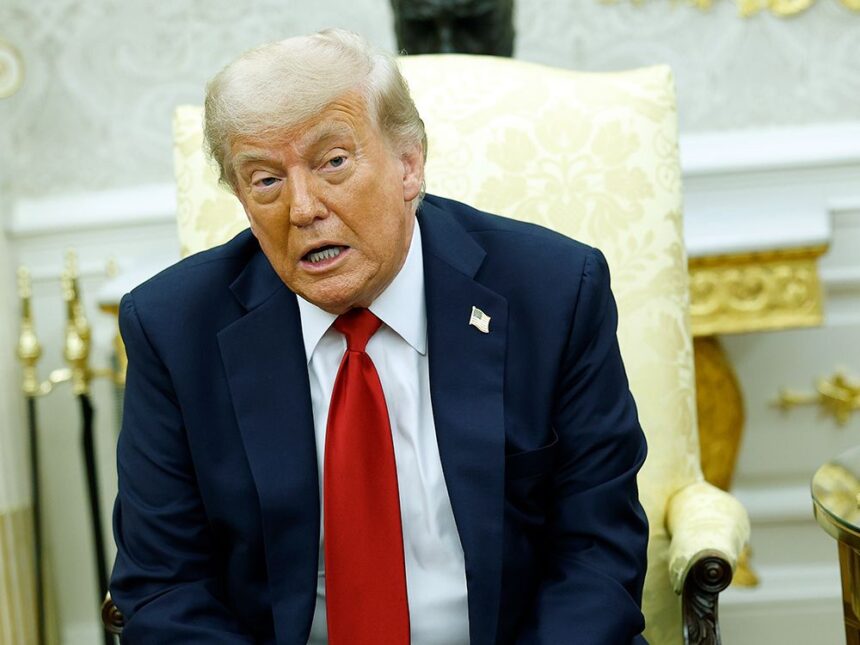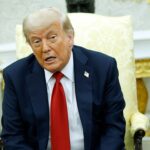The specter of a 35 percent tariff on Canadian imports looms large as president-elect Donald Trump doubled down on his protectionist stance this week, sending shockwaves through Ottawa’s economic circles and prompting urgent strategy sessions among Canadian officials. Trump’s unambiguous message—delivered via his signature social media platform—has effectively set the stage for what promises to be challenging trade negotiations between the neighboring nations.
“Consider this your formal notice,” Trump declared to Canadian Prime Minister Justin Trudeau, indicating that his administration would impose the substantial levy unless Canada takes decisive action against what he characterized as “massive tariffs” on American agricultural products. The statement represents one of Trump’s first direct foreign policy communications since securing his return to the White House earlier this month.
Finance Minister Chrystia Freeland and Minister of Export Promotion Mary Ng swiftly convened with industry leaders on Monday, initiating what observers describe as “war room” preparations for the impending trade discussions. Meanwhile, Mark Carney, recently appointed to lead a government economic committee, acknowledged the seriousness of Trump’s position during interviews with Canadian media.
“We have to take this as the opening position,” Carney stated on CBC’s Power & Politics. “This is something that needs to be engaged with directly and substantively.”
The potential economic impact of such tariffs cannot be overstated. With approximately 75 percent of Canadian exports destined for U.S. markets—representing roughly $1.3 billion in daily trade—analysts at CO24 Business warn that Trump’s proposed measures could significantly disrupt supply chains that have become deeply integrated over decades under the NAFTA and USMCA agreements.
Canadian officials point out that the current trade relationship is largely balanced, with CO24 News reporting that Canada imports nearly as much from the United States as it exports there. Furthermore, they emphasize that Canada represents America’s largest export market—larger than China, Japan, and the United Kingdom combined.
Trump’s specific reference to agricultural tariffs appears to target Canada’s supply management system for dairy, eggs, and poultry—a longstanding point of contention in Canada-U.S. relations. This system, which limits imports through tariff-rate quotas while controlling domestic production, has previously survived multiple trade negotiations, including those for the USMCA during Trump’s first term.
Industry experts note that Trump’s approach signals a potential departure from traditional trade diplomacy. “This isn’t conventional negotiation—it’s pressure tactics applied very publicly,” explained Dr. Amrita Singh, an international trade specialist at the University of Toronto, in an interview with CO24 World News. “The Canadian government will need to carefully balance defending sovereign economic policy with maintaining crucial market access.”
The political dynamics in Ottawa add another layer of complexity. With the Liberal government currently depending on NDP support, any significant concessions to American demands could face resistance from multiple fronts in Canadian politics. Conservative leader Pierre Poilievre has already signaled his intention to scrutinize the government’s handling of these negotiations, creating potential domestic political pressure.
Business leaders across various sectors are urging a coordinated, strategic response. “We need to engage constructively while demonstrating the mutual benefits of our integrated economies,” said Goldy Hyder, president of the Business Council of Canada. “This isn’t just about responding to tariff threats—it’s about articulating a vision for North American economic competitiveness in a challenging global landscape.”
As officials on both sides of the border prepare for what may be contentious discussions, the fundamental question remains: Will Canada’s long-established economic relationship with its largest trading partner undergo a transformative shift, or will diplomatic efforts succeed in preserving the integrated continental market that has defined North American commerce for generations?
























